Bowles Golden Grass Milium effusum 'Aureum'
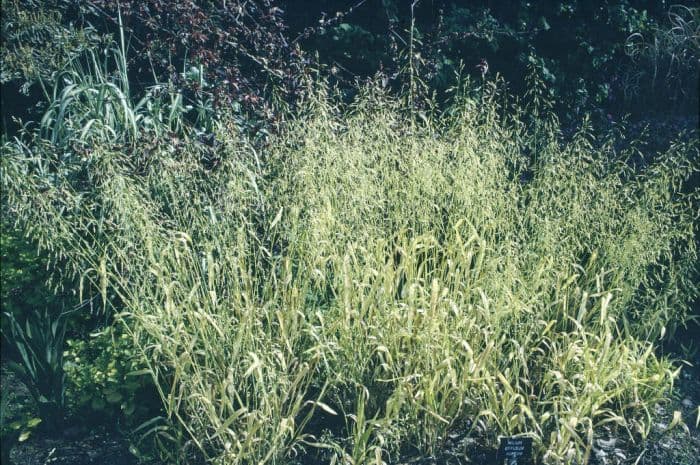

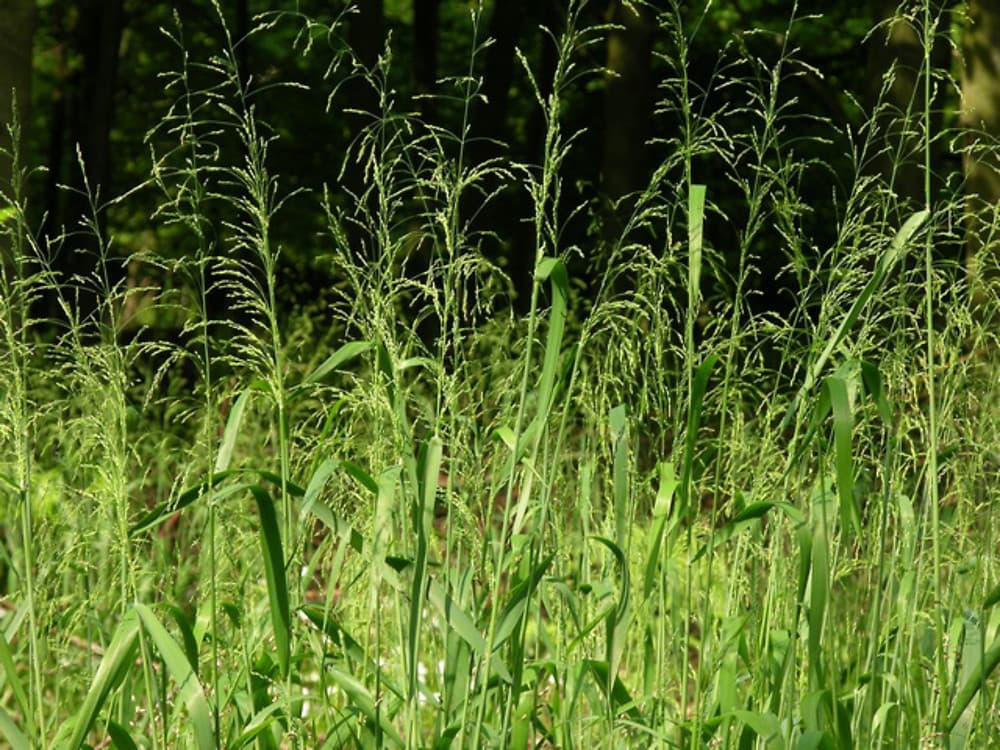
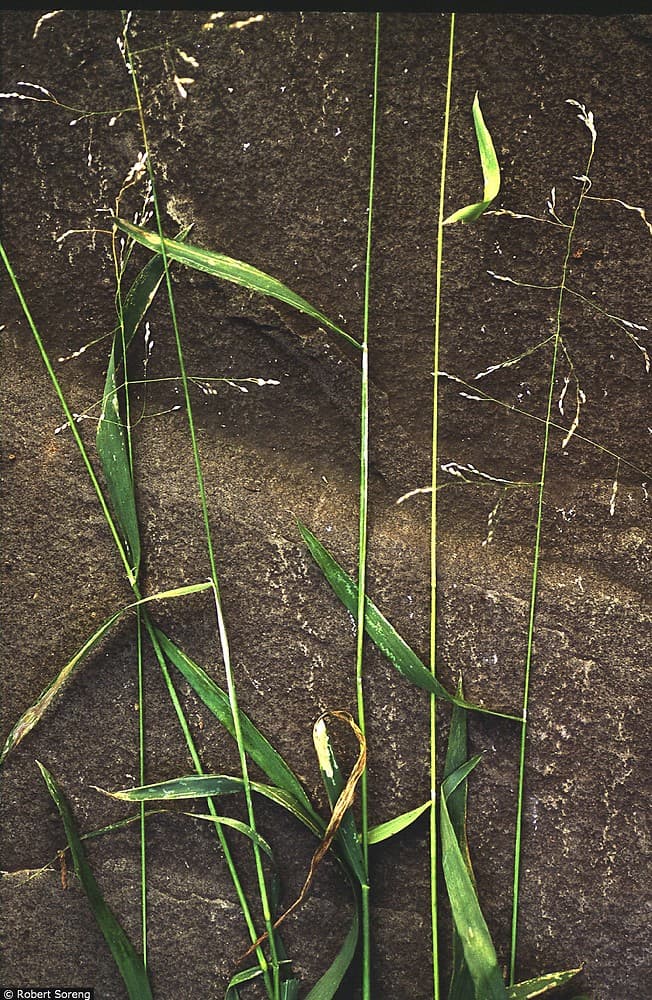
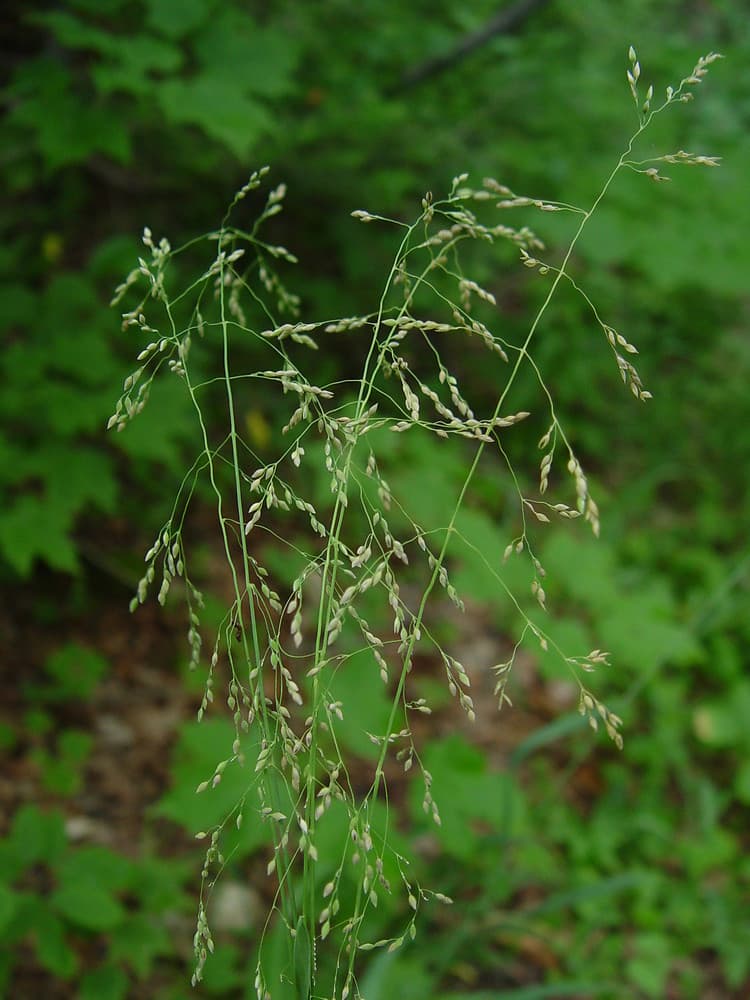
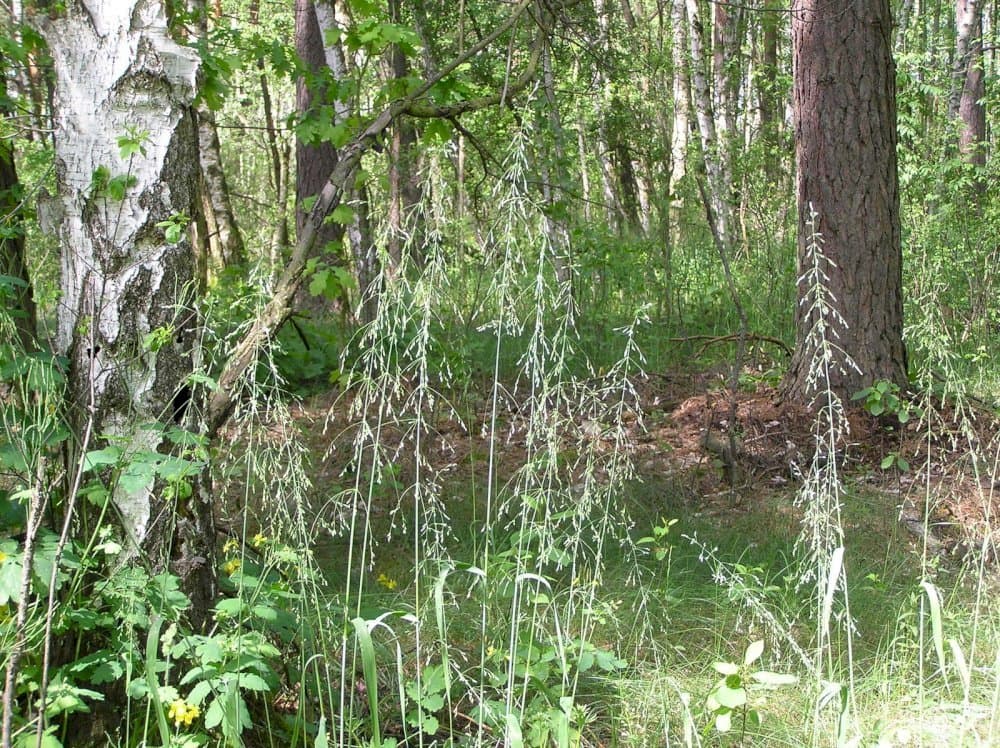
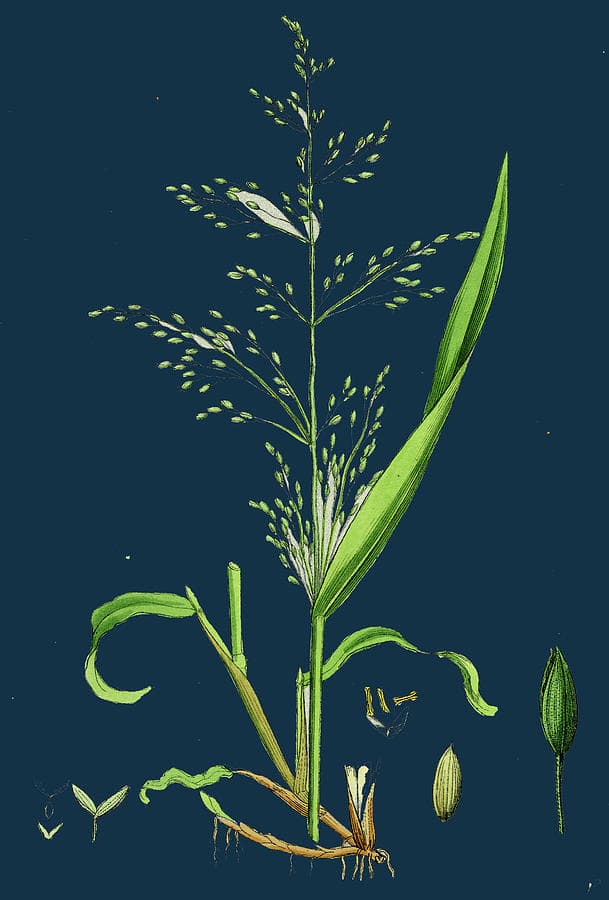
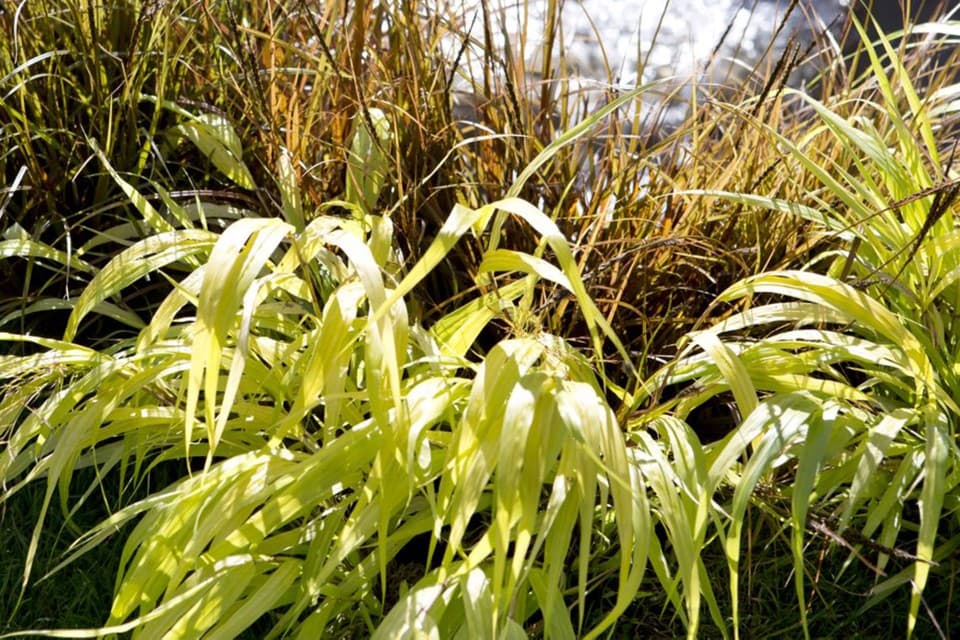
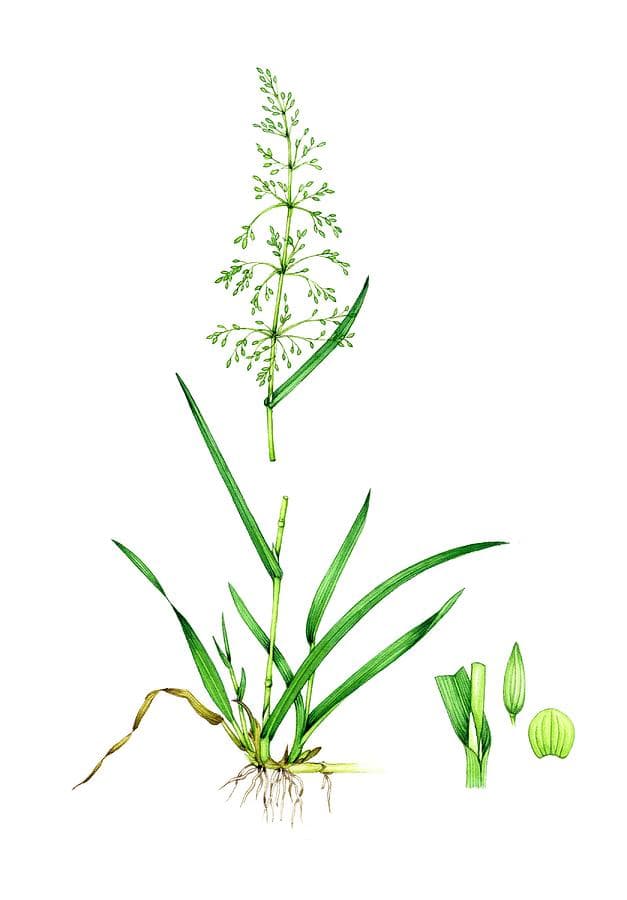
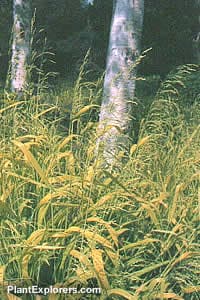
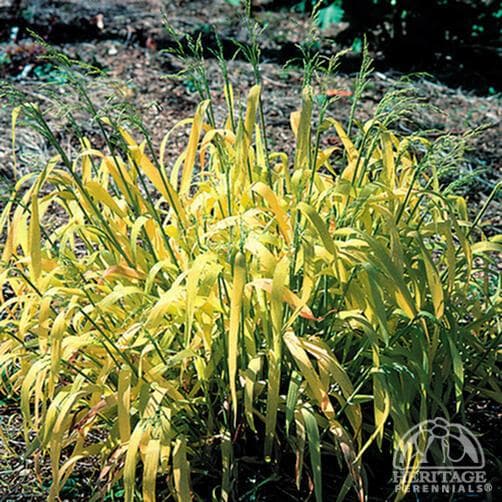
ABOUT
Commonly known as Bowles' golden grass, Milium effusum 'Aureum' has a unique and alluring presence in the garden. This grass is characterized by its bright, golden yellow-green foliage that provides a beautiful contrast to darker green plants in its vicinity. The leaves are soft, arching, and narrow, creating a delicate and feathery texture that sways gracefully in the breeze. In the spring, tiny light green flowers may emerge, adorning the grass with airy, subtle blooms that enhance its dreamy appearance. As the seasons change, the leaves of Bowles' golden grass may transform into a more muted color, yet they maintain their golden hues, continuing to gently capture the light. This plant's colorful foliage and fine texture make it a popular choice for adding vivid splashes of color and soft, flowing movement into a variety of garden settings. Its appearance can evoke a sense of enchantment in woodland gardens, shady borders, and when planted en masse or as an accent plant within a diverse tapestry of perennials.
About this plant
 Names
NamesFamily
Poaceae.
Synonyms
Bowles' Golden Grass, Golden Wood Millet, Golden Millet Grass, Golden Spike Millet.
Common names
Milium effusum var. cisatlanticum, Milium effusum var. petersii.
 Toxicity
ToxicityTo humans
Bowles' golden grass is not known to be toxic to humans. No severe symptoms would be expected to occur from incidental contact or ingestion of small quantities. However, as with any plant, individual allergies or sensitivities could cause mild reactions in certain people.
To pets
Bowles' golden grass is not recognized as a toxic plant to pets. It does not have a history of causing poisoning in animals like cats and dogs. Nonetheless, ingestion of any plant material could potentially lead to gastrointestinal upset or an allergic reaction in some pets.
 Characteristics
CharacteristicsLife cycle
Perennials
Foliage type
Deciduous
Color of leaves
Yellow-green
Height
1-2 feet (30-60 cm)
Spread
1-2 feet (30-60 cm)
Plant type
Herb
Hardiness zones
5
Native area
Europe Asia
Benefits
 General Benefits
General Benefits- Attractive Foliage: The Milium effusum 'Aureum', commonly known as Golden Millet Grass, has vibrant, golden-yellow leaves that brighten up shady areas in gardens.
- Shade Tolerance: It thrives in shady conditions where other plants might struggle, making it a great choice for understory plantings and woodland gardens.
- Low Maintenance: Golden Millet Grass requires minimal upkeep once established, making it a convenient choice for gardeners of all skill levels.
- Naturalizing: It can spread to form natural drifts of color, helping to create a wild, naturalized look in the garden.
- Seasonal Interest: In addition to its spring and summer appeal, it provides visual interest in the autumn when its foliage turns to a more muted color.
- Companion Planting: Its distinctive color and texture make it a great companion plant, helping to set off the colors and shapes of neighboring plants.
- Wildlife Support: While not focusing on the plant's air purifying qualities, it does provide support for wildlife, offering shelter and possibly food for insects and birds.
- Erosion Control: Its ability to spread and form a mat makes it useful for stabilizing soil and preventing erosion on slopes.
 Medical Properties
Medical PropertiesThis plant is not used for medical purposes.
 Air-purifying Qualities
Air-purifying QualitiesThis plant is not specifically known for air purifying qualities.
 Other Uses
Other Uses- Photographic background: Bright green foliage of Milium effusum 'Aureum', commonly known as Bowles' golden grass, can provide a vibrant backdrop for photographing insects and other small fauna.
- Craft material: The dried stems and seed heads can be used in floral arrangements and for making natural, rustic crafts.
- Education: Can be used to teach students about plant biology, including leaf pigmentation due to the golden hue of its leaves.
- Erosion control: Can be planted on slopes or areas prone to erosion due to its dense growth habit, helping to hold soil in place.
- Sensory gardens: Its soft texture and bright color can be included in gardens designed to provide a sensory experience for the visually impaired.
- Aquarium ornamentation: After proper treatment, it can be used as decoration in fish tanks.
- Performance art: With its eye-catching appearance, it can be incorporated into costumes or set designs for theater productions and performances.
- Feline entertainment: Some cat owners report that their cats enjoy playing with the wispy foliage and seed heads.
- Seasonal festivals: Can be used as decoration for spring and summer festivals due to its bright, lush appearance.
- Literary inspiration: May serve as inspiration for writers and poets who are drawn to its unique beauty and delicate structure.
Interesting Facts
 Feng Shui
Feng ShuiThe plant Bowles' golden grass is not used in Feng Shui practice.
 Zodiac Sign Compitability
Zodiac Sign CompitabilityThe plant Bowles' golden grass is not used in astrology practice.
 Plant Symbolism
Plant Symbolism- Resilience: Milium effusum 'Aureum', commonly known as "Bowles' golden grass," often symbolizes resilience because it is a hardy perennial that can thrive in a variety of conditions.
- Prosperity: The golden color of Bowles' golden grass is sometimes associated with wealth and prosperity, as gold is universally symbolic of riches and success.
- Light and Joy: This plant has a bright, cheerful appearance, which can be seen as a symbol of positivity and the ability to bring light into one’s life, representing joy and happiness.
- Growth and Vitality: As a grass that grows quickly and vigorously, Bowles' golden grass can symbolize personal growth, vitality, and the life force that drives nature.
 Water
WaterGolden Milium, commonly known as golden wood millet grass, should be watered deeply but infrequently, allowing the soil to dry out slightly between waterings. Typically, this would equate to approximately 1 inch of water per week, either from rainfall or manual watering. During the active growing season in spring and summer, water about once a week, and adjust based on weather conditions—more often during dry spells and less during periods of rain. In the winter, reduce watering to match the plant's decreased growth and evaporation rates. It's best to water this plant at the soil level to avoid wetting the foliage, which can encourage disease.
 Light
LightGolden Milium thrives in partial shade, where it receives dappled sunlight or light shade for most of the day. The ideal spot for golden wood millet grass would be under the canopy of open trees or situated to receive morning sunlight and afternoon shade. Avoid placing it in full sun, as the leaves may scorch, and likewise, deep shade may reduce the vibrancy of its golden color.
 Temperature
TemperatureGolden Milium prefers moderate temperatures and should be grown in regions where the temperature typically ranges between 50°F and 75°F. It can survive minimum temperatures down to around 20°F but may die back in colder climates and return in the spring. The plant is not suited to extreme heat and may struggle if temperatures consistently rise above 80°F.
 Pruning
PruningGolden Milium requires minimal pruning but can be cut back in late winter or early spring to allow for new growth. Generally, pruning golden wood millet grass is done to remove any dead or damaged foliage and to maintain a tidy appearance. Prune before the plant begins its active growth period, typically in late winter, to promote vigorous, healthy new shoots.
 Cleaning
CleaningAs needed
 Soil
SoilFor Milium effusum 'Aureum', commonly known as Golden Wood Millet, the best soil mix is well-draining yet moisture-retentive, rich in organic matter. A mixture of garden soil, peat or coco coir, and perlite or sand works well. The soil pH should be slightly acidic to neutral, ranging from 5.5 to 7.0 for optimal growth.
 Repotting
RepottingGolden Wood Millet does not typically require frequent repotting due to its moderate root system. It can be repotted every 2 to 3 years, or when the plant outgrows its current container, to refresh the soil and maintain healthy growth.
 Humidity & Misting
Humidity & MistingGolden Wood Millet thrives in average to high humidity levels. Aim to maintain humidity around 40-60% for optimal plant health, mimicking the moist woodland conditions of its natural habitat.
 Suitable locations
Suitable locationsIndoor
Place in bright, indirect light with moist soil.
Outdoor
Plant in partial shade with moist, fertile soil.
Hardiness zone
5-9 USDA
 Life cycle
Life cycleMilium effusum 'Aureum', commonly known as Golden Millet or Golden Wood Millet Grass, begins its life cycle as a seed, which upon germination in favourable conditions of moist soil and partial shade, sprouts into a young seedling. The seedling establishes itself, developing a network of roots and exhibiting rapid vegetative growth to form dense tufts of golden-yellow to chartreuse leaves. Through its vegetative stage, the plant undergoes tillering, where multiple shoots grow and give the grass its characteristic dense and lush appearance. As it matures, Milium effusum 'Aureum' reaches the reproductive stage in late spring to early summer, producing airy panicles of small, insignificant flowers that may pollinate through wind, resulting in seed production. After pollination and seed set, the plant enters a period of senescence with foliage fading to a pale straw color, particularly after the first frost in cooler regions. Finally, the plant completes its life cycle as the seeds disperse into the surrounding environment for germination in the next growing season, and the original plant may die back, especially in colder climates, or it may persist if the conditions are mild, showing growth again in the spring.
 Propogation
PropogationPropogation time
Spring to early summer
The most popular method of propagation for Milium effusum 'Aureum', commonly known as Bowles' golden grass, is by division. This is typically done in the spring, as new growth begins, or in the late summer or early autumn after the growing season. Gardeners can gently lift the clump of grass from the ground using a spade or fork, taking care not to damage the root system. The clump is then carefully separated into smaller sections, ensuring each new section has a healthy portion of roots attached. These new sections can be immediately replanted in the garden at the same depth they were previously growing, and should be watered well to help establish them. Division allows the plant to rejuvenate and can also help to control its spread within the garden.









